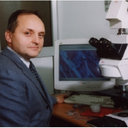A Controversial Medicolegal Issue: Timing the Onset of Perinatal Hypoxic-Ischemic Brain Injury.
Ключови думи
Резюме
Perinatal hypoxic-ischemic brain injury, as a result of chronic, subacute, and acute insults, represents the pathological consequence of fetal distress and birth or perinatal asphyxia, that is, "nonreassuring fetal status." Hypoxic-ischemic injury (HII) is typically characterized by an early phase of damage, followed by a delayed inflammatory local response, in an apoptosis-necrosis continuum. In the early phase, the cytotoxic edema and eventual acute lysis take place; with reperfusion, additional damage should be assigned to excitotoxicity and oxidative stress. Finally, a later phase involves all the inflammatory activity and long-term neural tissue repairing and remodeling. In this model mechanism, loss of mitochondrial function is supposed to be the hallmark of secondary injury progression, and autophagy which is lysosome-mediated play a role in enhancing brain injury. Early-induced molecules driven by hypoxia, as chaperonins HSPs and ORP150, besides common markers for inflammatory responses, have predictive value in timing the onset of neonatal HII; on the other hand, clinical biomarkers for HII diagnosis, as CK-BB, LDH, S-100beta, and NSE, could be useful to predict outcomes.



